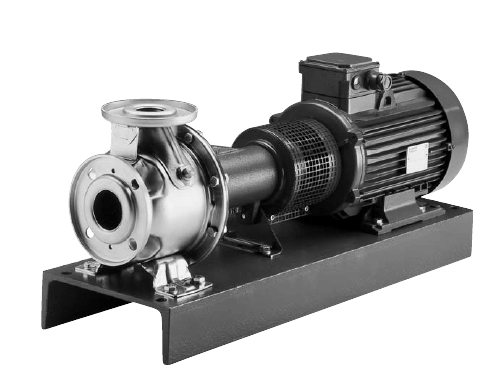Correct use of common clean water pumps
The correct use of common clean water pumps mainly includes the following aspects:
1. Preparation before use
Check the voltage: Make sure that the voltage of the clean water pump matches the power supply and the electrical operation is stable. Since the clean water pump works in a humid environment, a leakage protection switch should be installed before the power switch to ensure safe use of electricity.
Install the filter: If the water quality is poor, a filter should be installed at the suction pipe of the water pump to prevent debris from being sucked into the water pump and affecting the operation of the water pump.
Fix the water pump: Place the water pump on a stable ground to ensure that it will not move or shake during operation. At the same time, place the valve at the bottom of the suction pipe vertically into the water, and the recommended depth is generally 0.4 meters.

2. Precautions during use
Avoid moving: When the water pump is working, do not move or touch the water pump to avoid accidents.
Observe the operation: After the water pump starts working, observe its operation, including whether the current, voltage, flow and other parameters are normal. If there is any abnormality, stop the machine immediately for inspection.
Regular maintenance: Regularly maintain the clean water pump, including cleaning the filter, checking whether the seals are intact, lubricating the bearings, etc. This can extend the service life of the water pump and improve its working efficiency.
3. Processing after use
Turn off the power: After the water pump stops using, the power switch should be turned off in time to cut off the power.
Clean up the site: Clean up the debris and accumulated water around the water pump to keep the environment clean.
Record data: Record the use time, flow, voltage and other parameters of the water pump for future analysis and maintenance.
4. Processing under special circumstances
Self-priming clean water pump: If a self-priming clean water pump is used, it is necessary to add circulating emptying water to complete self-priming when it is put into operation for the first time. At the same time, it should be noted that the working efficiency of the self-priming clean water pump is slightly worse than that of other types of water pumps.
Submersible clean water pump: If a submersible clean water pump is used, care should be taken not to install a valve on its outlet pipe to avoid burning the motor due to excessive resistance of the water pump when the valve is closed. At the same time, the waterproof performance of the motor of the submersible clean water pump should be checked regularly.
5. Installation and commissioning
Installation location: Choose the place closest to the conveying liquid to install the clean water pump, and ensure that the pump is installed at the place with the minimum suction height and the shortest suction pipeline. At the same time, the distance between the unit and the surrounding obstacles should be greater than 150 mm, so that the motor fan has enough air source.
Pipeline installation: The installation of the pipeline should be reliably fixed, and the pipeline support close to the pump flange should be sufficiently rigid, and the pump should not be allowed to bear the weight pressure of the pipeline. The inlet and outlet pipelines of the pump should be equipped with gate valves to facilitate maintenance and operation adjustment.
Commissioning and operation: After the clean water pump is installed, it should be debugged and operated. Check whether the water pump is turning correctly, whether it runs smoothly, and whether there are any abnormal sounds. If there is any abnormality, it should be stopped immediately for inspection and troubleshooting.




